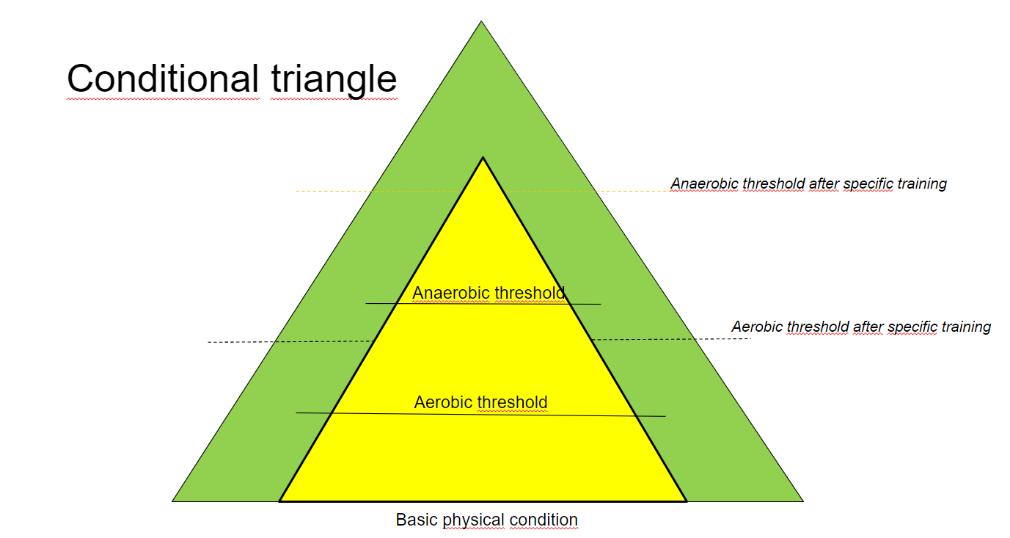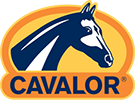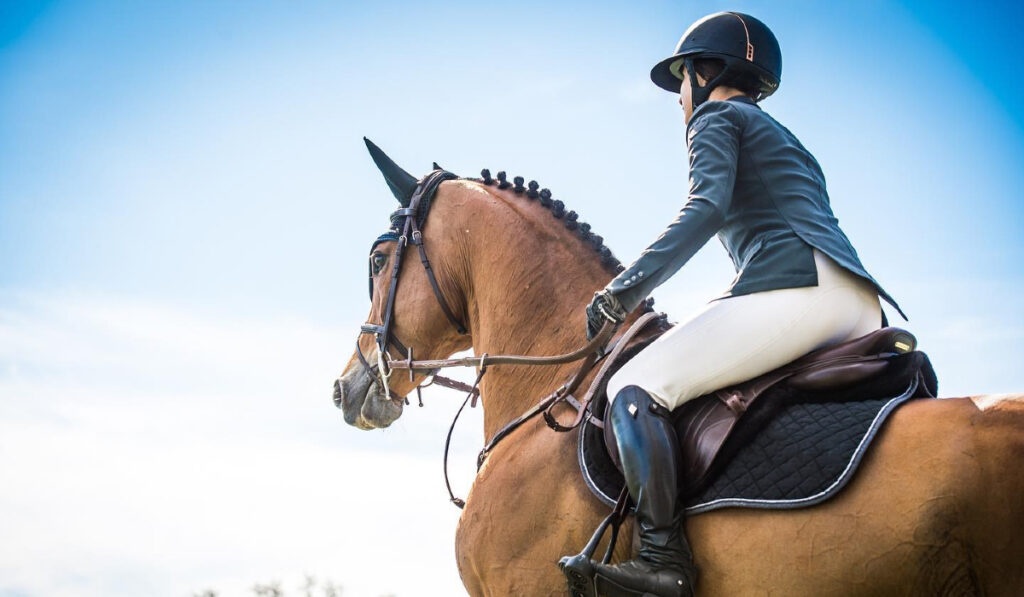Healthy and supple muscles are essential for the health and performance of sport horses. Your horse is only in top shape when his muscles are. The alternation of exercise and rest along with feeding according to need are the keys to healthy muscles. In this Science Sunday, we give you insight into muscle function and share with you the Cavalor roadmap for healthy and supple muscles.
Every horse – whether used for leisurely hacks or in Olympic-level competition – is an athlete. And athletes need healthy muscles for optimum movement and performance. We all know the feeling of a horse that is stiff after a hard workout or strenuous training. The horse feels stiff and rigid the next day (or maybe days). Why is that? To avoid fatigue and muscle problems during training or competition, it is important to understand which muscle fibres are mainly at work during training and competition, and which sources of energy they need to do that work.
April’s Science Sunday focused on strong muscles. We told you all about the importance of good nutrition for building muscle and where muscles get their energy from.
Fast-twitch and slow-twitch muscle fibres
Muscles are made of slow-twitch and fast-twitch muscle fibres. These are also known as Type I and Type II muscle fibres. When a horse does low-intensity work, it is mainly the slow-twitch muscle fibres that are working. These convert energy with the help of oxygen. This type of energy is called aerobic energy. When a horse starts intense work, it will not only have a higher heart rate, but its body will also partly switch to anaerobic energy conversion. The fast-twitch muscle fibres work anaerobically, i.e., without oxygen, during this type of work.
There a 2 types of fibres: fast-twitch and slow-twitch
Lactate does no harm
Lactic acid is formed in the Type II (fast-twitch) muscle fibres. The lactate is transported from the fast-twitch to the slow-twitch muscle fibres, which are close together. Slow-twitch fibres turn lactate into ATP, the fuel for muscles. ATP is reused by the muscles as energy. Lactate is therefore good for the horse’s muscles! It provides continuous energy for the muscle fibres. When more lactic acid is produced than the muscle can use, it will enter the bloodstream. There it splits into lactate and H+. It is the H+ ions that acidify the muscles, causing stiffness and possibly damage.
Importance of training and nutrition
Stiff and rigid muscles can be prevented through training. The more trained the horse is, the longer he can perform on aerobic energy, i.e. with oxygen in the muscle fibres. Exercise will raise your horse’s aerobic threshold. The horse will keep up more and more with the required work. The optimum transport of oxygen therefore prevents muscle damage and helps recovery. In addition to training, nutrition also plays an essential role. It is important to know that different muscle fibres require different energy. The fast-twitch muscle fibres (Type II) mainly obtain energy from food that is high in starch and sugars, providing short, high energy peaks during hard work. The slow-twitch muscle fibres (Type I) get energy from fats and fibre. This provides sustained, even energy during endurance work. Optimising a training plan without adjusting the feed plan is actually pointless.

Exercise raises your aerobic threshold. The more trained the horse is, the longer he can perform on aerobic energy, i.e. with oxygen in the muscle fibres, before acidification occurs. cfr. Wim Vandriessche
Give muscles the right fuel
By providing your horse with the right energy, you give him an optimum foundation for performance. In addition, you can use supplements to prevent muscle damage, promote recovery, and keep muscles healthy and supple. At Cavalor, we believe in the power of the combination. For example, we use vitamins E and C in combination with selenium and other antioxidants to protect muscles from oxidative stress. Scientific research has shown that a combination of the antioxidants vitamin C and vitamin E better protects your horse’s body against harmful substances than vitamin E alone. We’ve also added extra vitamins and minerals, including a complex of B vitamins and sulphur, magnesium, and manganese, to counteract muscle tension and promote flexibility and endurance. You will also find buffers and essential oils in Cavalor muscle supplements to further support the muscles. Buffers like sodium bicarbonate neutralise H+ molecules and prevent acidification. The active components of essential oils provide antioxidants to promote muscle relaxation and eliminate muscle fatigue.
Hydrate, hydrate, hydrate
We can’t say it often enough: hydrating is the first step to healthy muscles. Water stimulates blood circulation and ensures the elimination of waste products such as H+ ions. Electrolytes ensure that the body absorbs water and transports it to the right place. Electrolytes regulate the body’s water balance. A lack of electrolytes makes it harder for the body to absorb water. Water and electrolytes are, as it were, the driving function of the horse’s body. Give your horse electrolytes after a hard or long workout, in extremely hot weather, or any other conditions that caused the horse to sweat profusely. Your horse may also need electrolytes after transport.
Electrolytes regulate the body’s water balance
Do not underestimate the importance of warming up and cooling down
Working on healthy and flexible muscles requires conscious nutritional choices and a conscious approach to training. An essential part of training? Warming up and cooling down. Warming up wakes up the muscles and increases blood circulation. A few minutes at a relaxed trot as a cool-down exercise will eliminate accumulated waste. Do not underestimate the importance of both training components to keep your horse fit and work preventively against muscle stiffness and unnecessary muscle damage.
The Cavalor roadmap for healthy and supple muscles
Step 1: Hydrate. Feel Great!
Water and electrolytes drive your horse’s body
Step 2: Fill up with the right fuel
Choose the right feed
Step 3: Support your horse’s muscle function
Prevent muscle damage: supplement when needed
Step 4: The post-ride work is just as important as the work itself
Ensure that your horse gets a good cooling down and incorporate rest periods
Healthy muscles result from a combination of work, rest, and a good feed plan. Sometimes a basic ration will need added supplements. Every horse needs sufficient roughage and unlimited access to fresh water.
Short, explosive exercises like jumping mainly require starch and sugars. The ideal feed for this is Cavalor Perfomix: it contains grains like oats and wheat to provide high-energy peaks. For endurance work, there is Cavalor Endurix: a feed with a high fat content to stimulate aerobic metabolism and delay muscle fatigue.
Muscle Motion supports the muscles to keep them supple and healthy. It also helps to protect the muscle cells, preventing acidification and muscle damage. Cavalor LactaTec is specially designed for muscle performance. It optimises muscle function and postpones muscle fatigue so that your horse will be fit and supple from the start. It supports muscle recovery and prevents stiffness.
Complete your comprehensive plan with Cavalor Electrolytes and Cavalor FreeBute Gel. Electrolytes should be administered up to 2 hours before work or right after work. This retains minerals and replenishes your horse’s reserves in time, which is especially important during events lasting several days. Use Cavalor Freebute gel to loosen up sensitive muscles or for faster recovery after a sports injury.
Finally: make sure your horse is thoroughly cooled down after work to prevent stiff muscles. Add Cavalor CoolSens to your horse’s cool-down water. Cavalor CoolSens provides long and pleasurable cooling effects.
Want more information on the right feed for your horse? At MyCavalor.com, you can easily match your horse’s feed ration to its needs. Prefer to ask us personally? You can! Send an email to info@cavalor.com or call our Consumer Line at +32(0)9 220 25 25.


